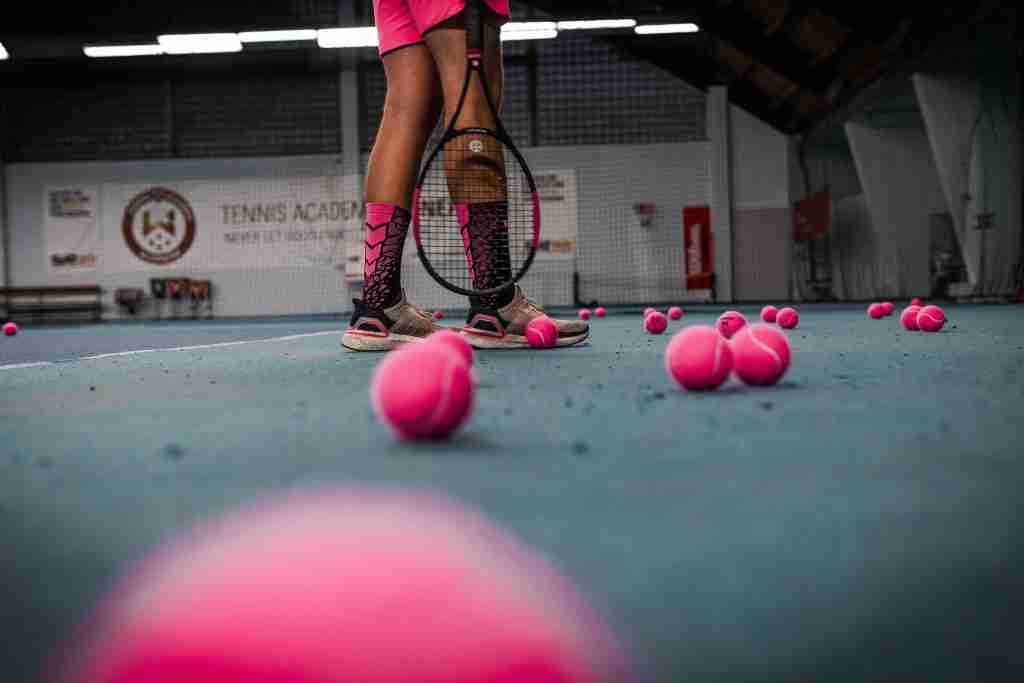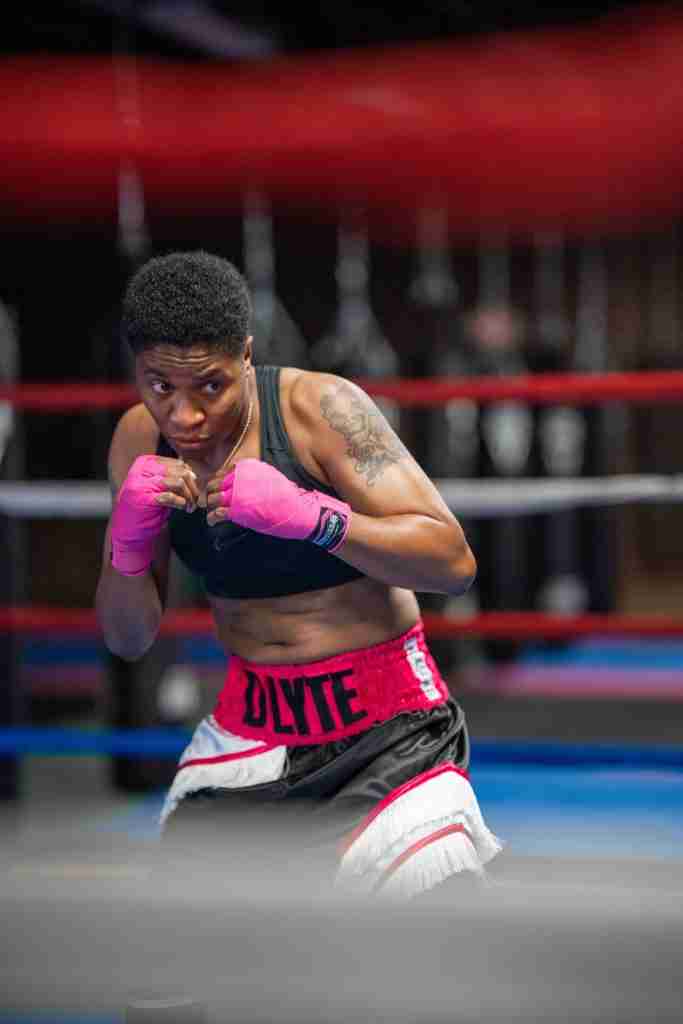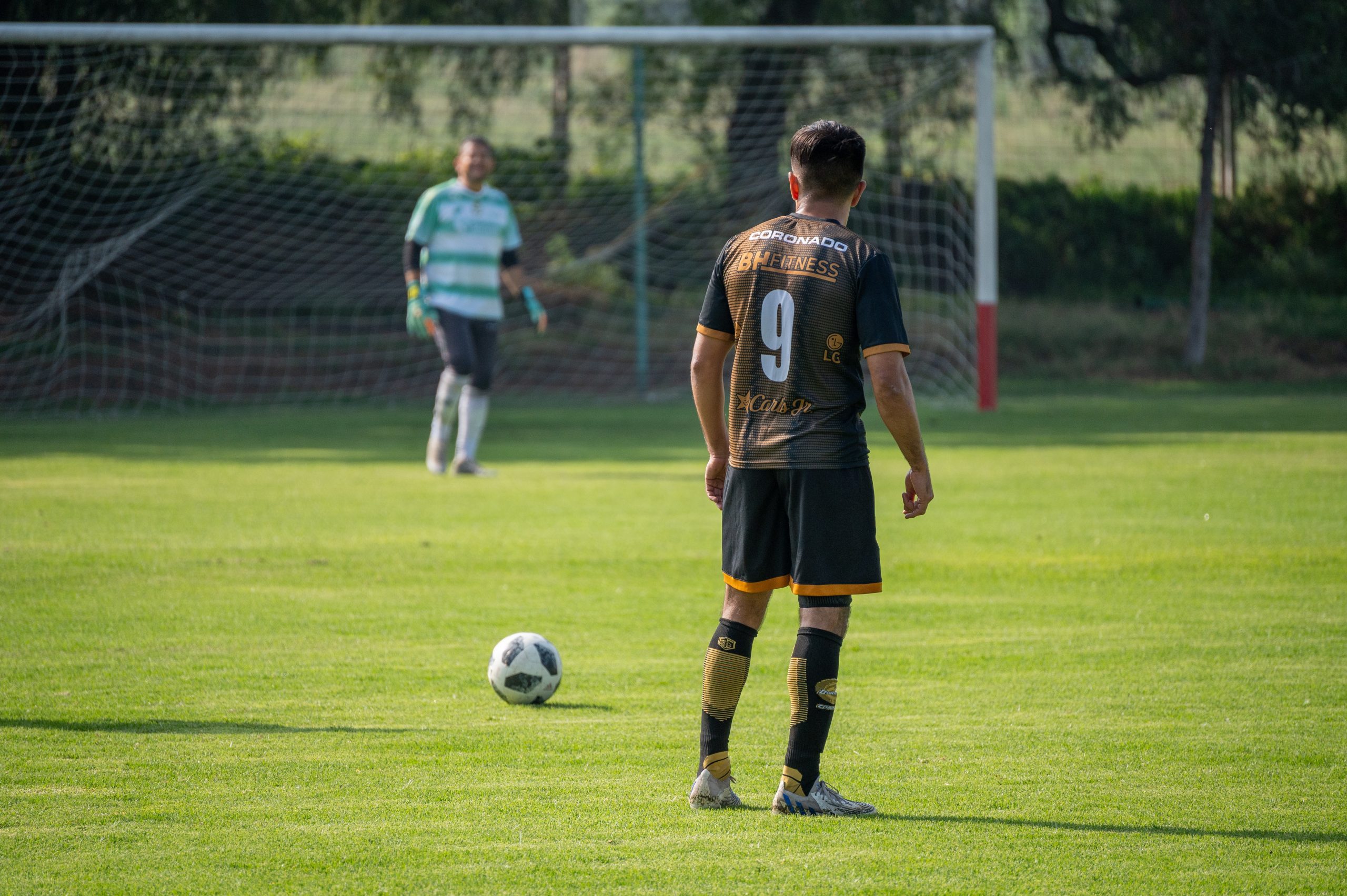So, you’re eager to know how players practice penalty kicks, huh? Well, let me paint you a picture. Picture a soccer field on a sunny afternoon, with a solitary player standing about 12 yards away from the goal. Their heart pounds in anticipation as they focus on the target, ready to unleash their best shot. This is just a glimpse into the intense preparation that players undertake to master the art of penalty kicks. From visualization exercises to simulated match scenarios, let’s explore the various methods that players employ to perfect these high-pressure kicks.

Different Techniques for Practicing Penalty Kicks
Simulation
When it comes to practicing penalty kicks, simulating game-like situations is crucial for honing your skills. Setting up a mock penalty shootout scenario not only helps you get used to the pressure and intensity of a real match but also allows you to work on your technique and decision-making under such conditions. Grab a few teammates or friends, line up the ball at the penalty spot, and take turns being the shooter and the goalkeeper. By recreating the tension and time constraints of a penalty kick, you can enhance your abilities to perform under pressure.
Target Practice
Accuracy plays a vital role in penalty kicks, and target practice can be a great way to improve this aspect of your game. Set up a target or aim at a specific area in the goal, such as the top corner or the bottom left. Then, take numerous shots from the penalty spot, focusing on hitting the target consistently. This exercise will not only help you develop muscle memory and increase your precision but also train your mind to visualize the desired outcome and successfully execute it. As you progress, challenge yourself by reducing the size of the target, simulating the smaller target area during competitive matches.
Pressure Drills
One of the most challenging aspects of taking penalty kicks is dealing with the immense pressure that comes with them. To prepare yourself mentally and emotionally, incorporate pressure drills into your training routine. For example, you can practice penalty kicks after an intense workout when your muscles are fatigued. This will simulate the physical and mental fatigue experienced during a real game, allowing you to learn how to focus and execute your shots effectively even when you’re tired. Additionally, you can create pressure situations by imposing consequences for missed kicks, such as performing extra fitness exercises or facing a penalty from a distance.
Developing Accuracy and Placement
Selecting a Spot
Choosing the right spot to aim for during a penalty kick can significantly influence your chances of success. While some players prefer to go for power and aim for the corners, others opt for accuracy and aim for the center. It’s essential to find a spot that works best for you and suits your style of play. Experiment with different target areas, analyze your success rate, and adjust your approach accordingly. Remember, consistency is key, so once you discover your preferred spot, stick with it to develop muscle memory and increase your accuracy.
Understanding Angles
Having a solid understanding of angles is paramount when it comes to penalty kicks. By assessing the goalkeeper’s positioning and the goal’s dimensions, you can exploit gaps and increase your chances of scoring. Analyze the goalkeeper’s position in relation to the goal and observe any gaps that may be present. For example, if the goalkeeper tends to favor one side, aim for the opposite corner. By utilizing angles to your advantage, you can deceive the goalkeeper and place the ball in an area that is harder for them to reach.
Mastering Placement
Mastering the art of ball placement during a penalty kick is essential for achieving consistent and accurate results. To improve your placement skills, focus on striking the ball with precision and control. Aim to hit the sweet spot of the ball, preferably with the instep or laces of your foot, to ensure maximum control over its trajectory. Develop a smooth and consistent kicking motion, keeping your body balanced and your eyes on the target. With practice, you’ll become more adept at placing the ball exactly where you want it, increasing your chances of finding the back of the net.
Enhancing Power and Velocity
Proper Striking Technique
To generate power and velocity during a penalty kick, it’s crucial to master the proper striking technique. Position your non-kicking foot beside the ball, with your body facing the desired target. As you approach the ball, take a few steps back to gather momentum, lift your kicking foot, and strike the ball with the area of your foot that provides the most power. Whether it’s the instep or the laces, focus on making a clean and powerful connection with the ball. By utilizing the correct technique, you’ll be able to unleash a powerful shot capable of beating even the best goalkeepers.
Strengthening Leg Muscles
Developing strong leg muscles is an integral part of increasing power and velocity in your penalty kicks. Incorporate leg strengthening exercises into your training routine to enhance your kicking ability. Exercises such as squats, lunges, and leg presses help build strength and power in your leg muscles. Additionally, plyometric exercises like box jumps and weighted leg swings can improve your explosive power, allowing you to deliver swift and forceful strikes. Remember to focus not only on your quadriceps but also on your hamstrings and calves to maintain a well-rounded lower body strength.
Improving Kick Speed
In addition to power, kick speed is an essential factor in the success of a penalty kick. To improve your kick speed, focus on enhancing both your leg strength and your technique. Applying force through a quick and explosive kicking motion will help you generate maximum speed. Additionally, incorporating agility drills and plyometric exercises into your training can improve your overall speed and quickness, enabling you to get to the ball faster and with greater impact. Consistent practice and diligent training will allow you to unleash lightning-fast shots that keep the goalkeeper guessing.
Mastering Mental Preparation
Visualizing Success
Mental preparation is a crucial aspect of penalty kick success. Visualize yourself executing a perfect penalty kick, from the moment you position the ball on the spot to the exhilarating feeling of watching it hit the back of the net. Visualization helps build confidence and conditions your mind to believe in your ability to succeed. Before stepping up for a penalty kick, take a moment to close your eyes and mentally rehearse the entire process. Visualize yourself achieving your desired outcome, and channel that positive energy into your performance.
Building Confidence
Confidence plays a vital role in penalty kicks. It can be the determining factor between success and failure. Building confidence starts with recognizing your own abilities and previous successes. Reflect on your past penalty kick successes, reminding yourself of the times you converted with accuracy and precision. Additionally, focus on your strengths as a player and remind yourself of the countless hours of practice you’ve dedicated to improving your skills. Surround yourself with positive and supportive teammates and coaches who believe in your abilities. By building confidence, you’ll be able to step up to the penalty spot with a calm and composed mindset.
Handling Pressure
Penalty kicks inherently come with immense pressure, and learning to handle that pressure is vital for success. Embrace pressure as an opportunity rather than a burden. Reframe the situation in your mind and view it as a chance to showcase your skills and contribute to your team. Implement relaxation techniques, such as deep breathing and positive self-talk, to manage nerves and maintain focus. By acknowledging and accepting the pressure, you can transform it into a source of motivation and perform at your best when it matters most.

Analyzing Goalkeeper Reactions
Studying Patterns
Understanding the patterns and tendencies of goalkeepers can provide valuable insight during penalty kicks. Watch videos or live matches to analyze the goalkeeper’s reactions and preferred techniques. Note any noticeable patterns in their positioning, diving directions, or hand placements. Use this information to your advantage by aiming for areas where the goalkeeper is less likely to react quickly or has shown a susceptibility in the past. A well-placed shot taking advantage of a goalkeeper’s tendencies can significantly increase your chances of scoring.
Reacting to Dives
Goalkeepers often dive in an attempt to save penalty kicks. Developing the ability to react quickly and adjust your shot accordingly can give you an edge. As the goalkeeper makes their dive, keep your eyes on their movement and adjust the placement of your shot accordingly. If the goalkeeper is diving to the left, aim for the opposite side of the goal. Similarly, if they go to the right, aim for the left side. By being able to read and react to the goalkeeper’s dive, you can increase your chances of evading their reach and finding the back of the net.
Exploiting Weaknesses
Every goalkeeper has weaknesses that can be exploited during penalty kicks. Effective observation and analysis can help you identify these weaknesses and capitalize on them. Look for signs of poor footwork, a tendency to anticipate shots early, or a lack of flexibility. Adjust your shot and aim for areas that exploit these weaknesses. By targeting a goalkeeper’s vulnerabilities with accuracy and precision, you can significantly increase your chances of converting penalty kicks.
Practicing Penalties in Match-Like Conditions
Replicating Match Situations
To truly prepare for penalty kicks, it is essential to replicate match-like conditions as closely as possible during training. Set up practice sessions that mimic the atmosphere and pressure you would experience in real games. Use the same routine you would follow before taking a penalty in a match, including the time it takes to approach the ball and the number of steps you take. Additionally, incorporate distractions such as crowd noise or teammates cheering to simulate the heightened pressure of a game situation. By exposing yourself to these conditions in practice, you can develop the focus and composure required to excel in actual penalty shootout scenarios.
Dealing with Fatigue
Fatigue can be a determining factor in penalty kicks, as the physical demands of a game can affect your technique and decision-making. To prepare for this, incorporate fatigue-inducing exercises or play a mock game before practicing penalty kicks. This will help train your body to perform under conditions of exhaustion and replicate the physical and mental challenges you may face during a real match. By practicing penalties in a fatigued state, you can develop the stamina and mental fortitude required to maintain focus and execute accurate shots when it matters most.
Performing under Pressure
Performing under pressure is a crucial skill that can make or break your success rate in penalty kicks. Incorporate pressure situations into your training sessions by setting consequences for missed shots or rewards for successful conversions. This can include performing extra fitness exercises for missed kicks or receiving applause and praise for well-executed shots. By simulating pressure and instilling consequences, you can train your mind to remain focused, perform under stress, and deliver accurate shots, even when the outcome hangs in the balance.

Training in Different Weather Conditions
Wind
Practicing penalty kicks in different weather conditions can help you adapt your technique and decision-making to factors beyond your control. Wind, for instance, can significantly affect the flight of the ball. To understand how wind affects your shots, practice penalty kicks on windy days or simulate wind conditions by setting up fans or portable wind machines. Observe how the wind alters the ball’s trajectory and adjust your aim and power accordingly. By training in various wind conditions, you can develop the ability to adapt and make effective decisions when facing challenging weather situations during real matches.
Rain
Rain can introduce slippery conditions, making it more challenging to maintain a consistent kicking motion and generate power. By practicing penalty kicks in the rain, you can adapt to the wet surface and learn to control the ball effectively. Focus on maintaining balance, using shorter strides, and striking the ball cleanly to counteract the slippery conditions. Embrace the challenge and use it as an opportunity to improve your control and technique. By training in the rain, you’ll be better equipped to handle adverse weather conditions when the time comes.
Extreme Temperatures
Playing in extremely hot or cold temperatures can impact your performance during penalty kicks. Extreme cold can make it harder to generate power and can affect the sensitivity in your feet while extreme heat can lead to quicker dehydration and fatigue. By practicing penalty kicks in various temperature conditions, you can acclimate your body to the challenges presented by extreme temperatures. Wear appropriate, comfortable clothing for each condition and focus on maintaining proper hydration and energy levels. By training in different temperature extremes, you will be better prepared to perform at your best, regardless of the weather conditions.
Understanding Psychological Factors
Managing Stress
Stress is an ever-present factor in penalty kicks, and managing it effectively is crucial for success. Incorporate stress management techniques into your training routine to develop resilience and composure under pressure. Deep breathing exercises, meditation, and visualization can help calm nerves and center your focus before stepping up to the penalty spot. Additionally, embracing a growth mindset and reframing stressful situations as opportunities for growth can help alleviate anxiety and boost confidence. By mastering stress management techniques, you can perform at your best when the stakes are high.
Dealing with Nerves
Nerves can have a significant impact on your performance during penalty kicks. It’s important to acknowledge and accept nervousness as a natural part of the process. Embrace nerves as a sign that you care about the outcome and transform them into positive energy. Develop a pre-penalty routine that helps you center yourself and regain focus. Whether it’s taking deep breaths, engaging in positive self-talk, or performing a specific physical gesture, find what works best for you to manage nerves and maintain a calm mindset. By effectively dealing with nerves, you can minimize their interference and focus on executing accurate penalty kicks.
Overcoming Past Failures
Past failures can sometimes haunt players during penalty kicks, leading to a lack of confidence and fear of repeating past mistakes. Overcoming these psychological barriers is crucial for success. Instead of dwelling on past failures, treat them as learning experiences and opportunities for growth. Analyze what went wrong during those moments and focus on the improvements you’ve made since then. Engaging in positive self-talk and visualization can help rewire your mindset and eliminate the fear of failure. By understanding that past failures do not define your present abilities, you can approach penalty kicks with renewed confidence and overcome any mental obstacles in your path.
Utilizing Technology and Data Analysis
Video Analysis
Video analysis has become an invaluable tool for players looking to enhance their performance, and the same applies to penalty kicks. Record and analyze your penalty kicks to gain insights into your technique, accuracy, and decision-making. Pay attention to your body positioning, foot placement, and any recurring patterns or errors. Compare your videos to those of successful penalty takers to identify areas for improvement and implement necessary adjustments. Video analysis can provide valuable feedback and serve as a guide for refining your penalty kick technique.
Statistical Insights
Data analysis can provide valuable statistical insights that can inform your approach to penalty kicks. Analyze your historical penalty kick data, including success rate, preferred target areas, and tendencies during different game situations. Identify patterns or weaknesses in your performance and use the information to develop a strategic plan. Additionally, studying statistical data of opposing goalkeepers and their penalty-saving tendencies can help you make informed decisions during penalty shootouts. Utilize statistics as a tool to refine your approach and increase your chances of scoring from the penalty spot.
Performance Tracking
Tracking your performance during penalty kicks can offer a comprehensive overview of your progress over time. Keep a record of your penalty kicks, noting factors such as target areas, power, accuracy, and success rate. Continuously monitor and analyze your data to identify areas for improvement and track your development. By tracking your performance, you can set realistic goals, measure progress, and refine your training routines to address any weaknesses. Performance tracking provides valuable feedback and serves as a compass to guide your journey towards penalty kick excellence.
Seeking Professional Guidance
Working with Coaches
Coaches play a vital role in guiding players through the intricate facets of penalty kick practice. Seek the guidance of experienced coaches who can provide personalized instruction, observe your technique, and offer valuable feedback. Coaches can help identify areas for improvement, suggest training drills, and provide mentorship throughout your penalty kick development journey. Their expertise and guidance can help you refine your technique, overcome mental barriers, and maximize your potential when taking penalty kicks.
Joining Penalty Kicks Camps
Participating in penalty kicks camps can offer a unique and immersive training experience. These specialized camps often feature expert trainers and the opportunity to train alongside and compete with other players who share your passion for penalty kicks. By joining these camps, you can gain exposure to different techniques, receive professional coaching, and test your skills against a variety of goalkeepers. Penalty kicks camps provide a supportive and competitive environment that fosters growth and facilitates skill development.
Seeking Expert Advice
In addition to coaches and camps, seeking expert advice from professional players or penalty kick specialists can provide invaluable insights. Online platforms, forums, and social media allow access to a wealth of information from seasoned professionals who are willing to share their knowledge. Engage in conversations, ask questions, and learn from those who have honed their penalty kick skills to a high level. By seeking expert advice, you can benefit from real-world experiences, gain tactical insights, and further refine your approach to penalty kicks.
Penalty kicks are often seen as a golden opportunity for players to make a significant impact on a match. Mastering this aspect of the game requires a combination of physical skill, mental fortitude, and strategic decision-making. By employing various techniques for practicing penalty kicks, developing accuracy and power, mastering mental preparation, analyzing goalkeeper reactions, training in match-like conditions, understanding psychological factors, utilizing technology, and seeking professional guidance, you can increase your chances of succeeding when the pressure is on. Remember, practice, dedication, and a growth mindset are the keys to penalty kick mastery. So, step up to the spot, believe in yourself, and deliver that perfect strike into the back of the net.


